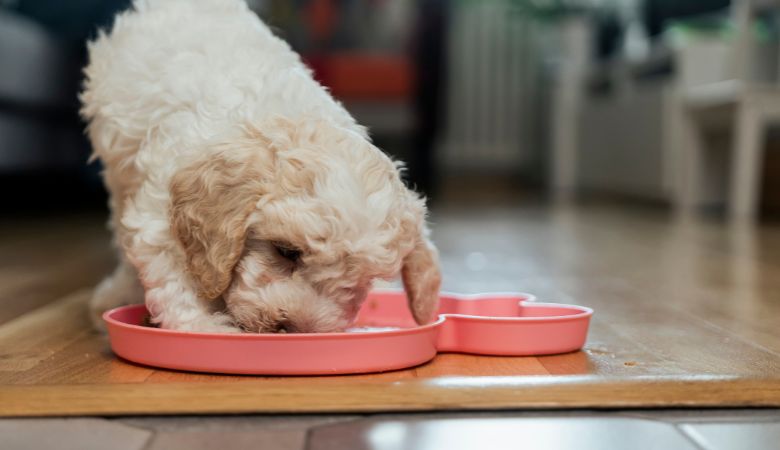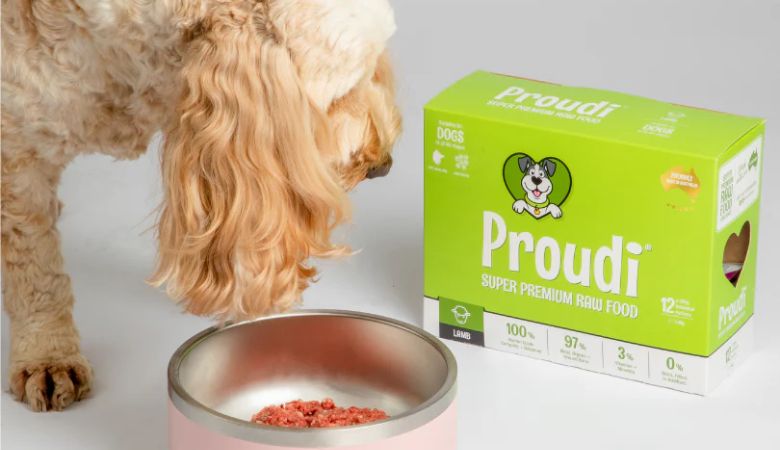If you've switched your dog to a raw diet and are looking to help them shed some excess weight, you've already taken a positive step toward maintaining their overall health and well-being.
Raw diets can offer many benefits, including improved digestion, healthier skin and coat, and better energy levels. However, even on a raw diet, some dogs might still need a bit of assistance to reach their ideal weight. Here are some effective tips to help your dog lose weight while enjoying the benefits of a raw diet.

1. Consult with a Veterinarian
Before making any significant changes to your dog's diet, it's crucial to schedule a wellness check with your veterinarian, particularly if your dog has any pre-existing health conditions. This check-up will not only allow for an initial weigh-in and possibly a girth measurement but can also provide a chance to discuss any potential challenges to weight loss you’ve identified.
Moreover, it can help uncover any health conditions that might be affecting your dog's weight—this is especially vital if the weight gain has been sudden or accompanied by other symptoms.
2. Assess the Current Diet
Start by evaluating what your dog is currently eating. Is the diet balanced and portioned correctly? A raw diet typically includes a mix of muscle meat, organ meat, bones, and a small portion of fruits and vegetables. Ensure that your dog is getting the right balance of nutrients without overfeeding.

3. Identify any potential challenges
A common challenge with weight management diets is ensuring compliance. It's vital that everyone in the household understands the importance of sticking to your dog's weight management plan. Excessive treating or feeding beyond the established portions can undermine the effectiveness of the plan.
By offering alternatives, such as using lower calorie treat options or setting aside a portion of the main meal for treats, it becomes easier for the whole household to help your dog stay on track.
4. Calculate Proper Portions
It's important to feed the correct amount of food based on your dog's ideal weight, not their current weight. A general guideline is to feed 2-3% of their ideal body weight in raw food daily to maintain condition.
For example, if your dog's ideal weight is 30kg, you should be feeding them 600-900g of raw food per day. Adjust the amount as necessary based on your dog's activity level and metabolism.

5. Increase Protein, Reduce Fat
Lean meats such as kangaroo, venison, turkey, and fish can provide high-quality protein to the diet without adding too much fat. It is suggested to avoid fatty cuts of meat or bones with excessive visible fat, or trimming/removing excess fat from the meat or edible bones before feeding.
Reducing fat intake can help in managing your dog's weight.
6. Include Veggies and Fibre
Incorporate low-calorie vegetables like leafy greens, broccoli, and carrots into your dog's raw diet. These veggies add dietary fibre, which can help your dog feel full and satisfied without adding extra calories.
You can puree and/or cook the vegetables for better digestion and absorption of nutrients.

7. Monitor Treats and Snacks
Treats and snacks can quickly add up in terms of calories. By choosing low-fat, minimally processed, natural treats, you can help keep your dog on track and avoid hidden sugars and fats found in some commercial treats. Another option is to allocate a portion of the main meal specifically for treats.
Always remember to include treats in your dog's daily caloric intake.
8. Increase Physical Activity
Exercise is a key component of any weight loss plan. Regular walks, playtime, and mental stimulation can help your dog burn calories and maintain a healthy weight. Tailor the exercise routine to your dog's age, breed, and health condition.
Remember to slowly build up the length and intensity of any physical activity over time. Even short, frequent play sessions can make a difference.

9. Weigh-Ins and Adjustments
Track your dog's weight and measurements regularly to monitor progress. Monitoring weekly will allow you to not only track and assess progress but will also allow you to adjust the portions and exercise routine as needed based on the results. Consistency and patience are important, as healthy weight loss is a gradual process.
10. Set backs or challenges
Dealing with setbacks and plateaus in your dog's weight management journey can be challenging, but persistence and a few strategies can help keep your dog on track:
-
Assess and Adjust: Re-evaluate your dog's diet, check for hidden calories, and increase variety in their meals.
-
Increase Physical Activity: Introduce new exercise routines and gradually increase the length and frequency of sessions.
-
Monitor Progress Closely: Keep regular weigh-ins and maintain a journal to track food intake, exercise, and weight changes.
-
Stay Positive and Patient: Celebrate small wins and remain consistent with the diet and exercise plan.
-
Address Underlying Issues: Consult with a veterinarian to rule out health issues and address behavioral factors.
-
Modify the Environment: Provide a stimulating environment with toys and activities and use puzzle feeders to make mealtime engaging.
-
Stay Flexible: Be open to adjusting the diet and exercise plan as needed.
By following these tips, you can help your dog achieve and maintain a healthy weight while enjoying the benefits of a raw diet. Remember, every dog is unique, so it may take some trial and error to find the perfect balance for your pet.
With dedication and care, your dog will be on the path to a healthier, happier life. Remember, weight management is a journey, and every step forward counts.


